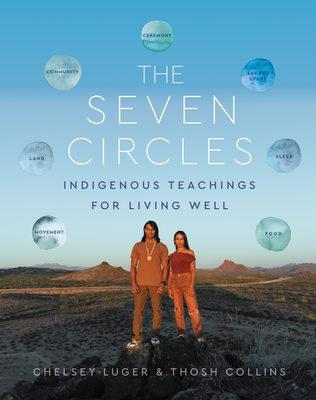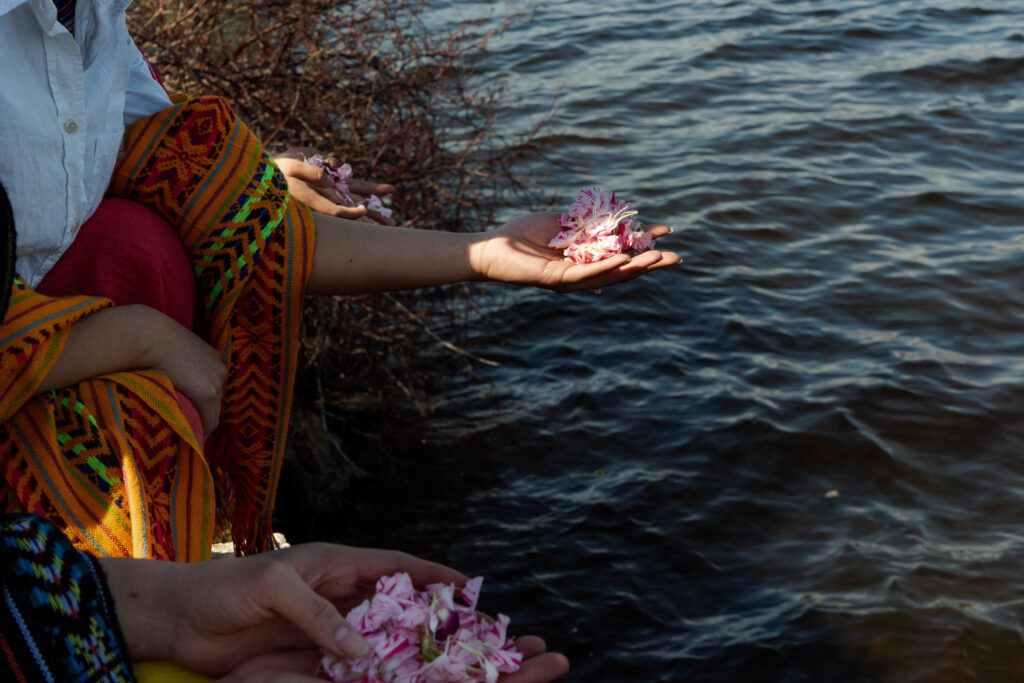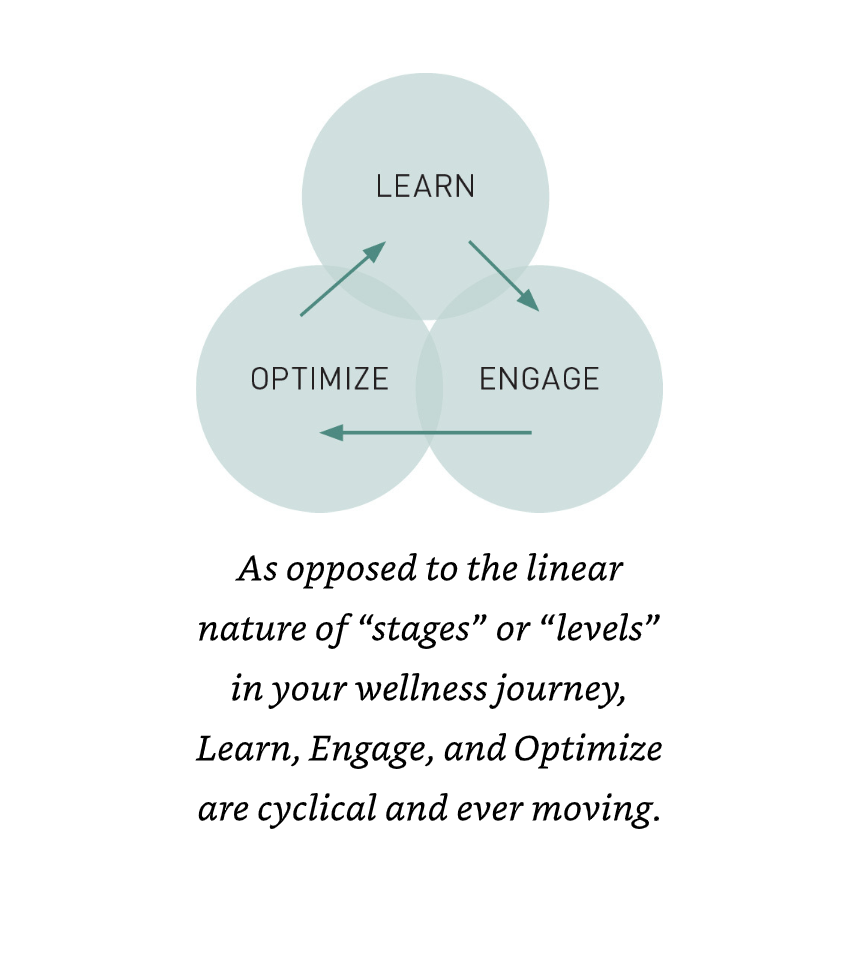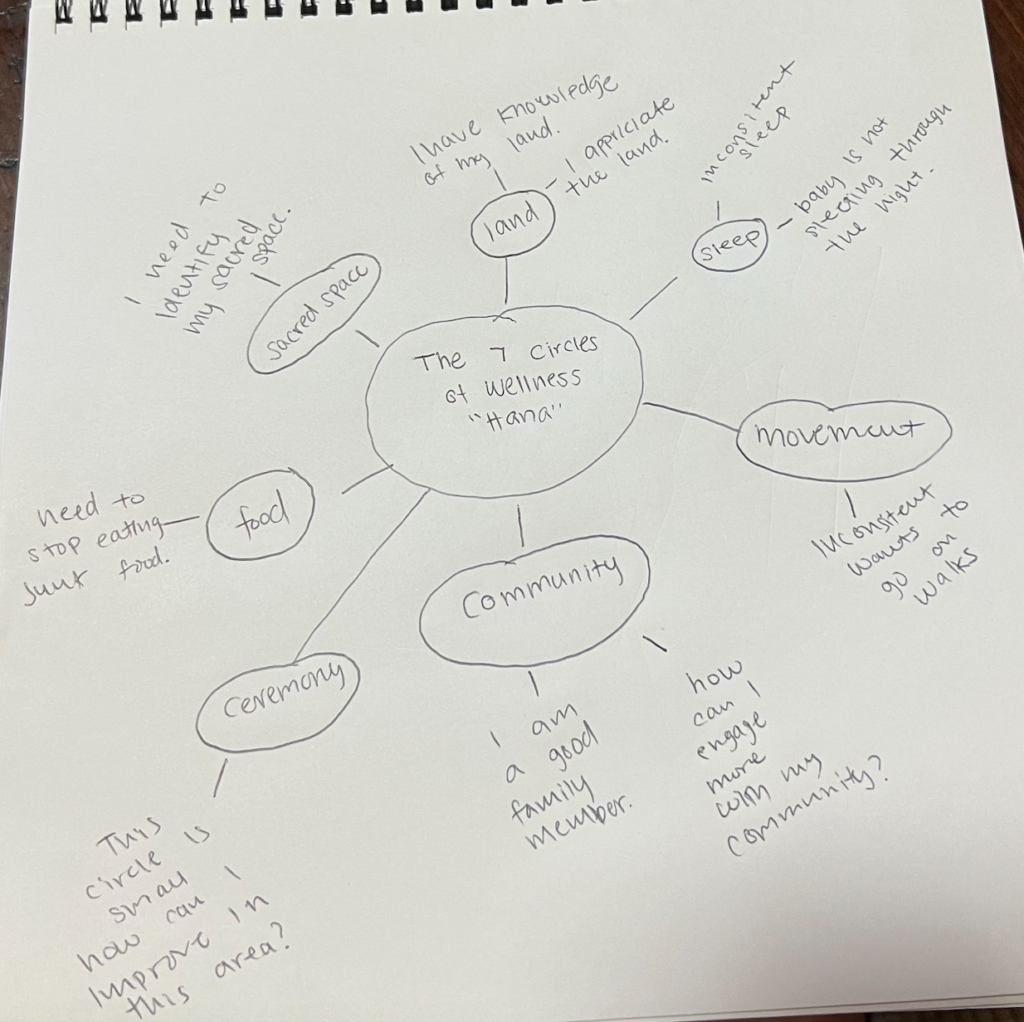
Summary

The introduction of the Seven Circles gives a brief overview of the colonization of indigenous people. Chelsey and Throsh speak about their indigenous bloodlines and ties. How all indigenous people share something in common despite being from different lands of the world and that is an appreciation for life and what gives life to life. They introduce a method of wellness through indigenous practices heavily influenced by the Lakota, Ojibwe, O’odham, and Haudenosaunee teachings as this is where their blood runs in. They follow the indigenous way of balance, interconnectedness, healing, and gratitude. Chelsey and Throsh introduce the seven circles of healing in a way where it does not feel like money will be driven in like how the Western society has. The Seven Circles is not a competition or a race that should be compared to others. It is your own journey that you choose to take whether you take it wholeheartedly, bits and pieces from it, or completely walk away from it. Chelsey and Throsh respectfully introduce their way of health without persuading people from Western medicine practices, doctors, and any other way that benefits your health.
Take Action Section
In this section, there are three circles which are learn, engage, and optimize. In the learn category you are learning how the circles may contribute to your life and wellness. You may learn new things that you want to engage with.
In the engage circle you are now able to integrate the concepts into your life in your own way that benefits you. You are trying new things, making or ending habits, and taking healthy risks.
In the optimize circle you have now been utilizing this practice for some time now. You have a self-realization of how the practices have benefited you. You may also be mentoring others to try these practices.
The journey is never-ending though, it is a continuous process. You are never done learning new things. I admired their saying “The more you know, the more you need to know.”

The Seven Circles
The seven circles include movement, sleep, ceremony, land, sacred space, community, and food. Everyone’s seven circles look different and it’s not a competition to have the biggest circles that are of the same size. The seven circles is a long-term wellness journey. Instead of looking at what you need help in, you look at what you are thriving in whether it is taking walks every day (movement), going to church or meditating (ceremony), being a good parent (community), and the list goes on. Your circles may also change over time some circles may shrink and some may get bigger.

This is how my 7 circles look right now. I am aware now of how imbalanced my life is right now. How and where I should work to bring balance to my life. In creating your seven circles map, you are not limited to just writing down the things you are thriving in but what habits you’d like to start or end, questions that you may have, etc.
I believe that by utilizing The Seven Circles in intervention and recovery it allows people to see where there is an imbalance in their life. They are able to discover their identity of needs. It allows us to set an infinite number of goals in life. Utilizing this method of wellness is never ending which always seeks improvement in an individual’s life.
Something that aroused my thinking…
As I read through the introduction of The Seven Circles one thing Chelsey and Throsh were adamant about was self-identity and how self-identity can improve a person’s wellness. I couldn’t help but think about how my culture, the Chamorro culture feels empty to me. They spoke about how the indigenous people of their lands were colonized but held strong to their roots and culture. It feels to me the Chamorros were colonized by so many countries that we have lost our heritage. There are never-ending wonders of what truly are our indigenous dances and practices, which seem to be borrowed from the Polynesians and Carolinians. Only a handful of locals know how to count in the ancient Chamorro language, instead, we count uno, dos, tres. A borrowed language from the Spaniards. Although some may disagree with me it’s a true feeling of loss. In fact, archeologists are still working on trying to understand the life of the Chamorros. It seems that our identity has been washed away by colonization. I wish to know the real Chamorro practices and culture, not the practices that our elders over the years put together to get a grasp of who we really are.

Comments
7 responses to “Introduction of The Seven Circles of Wellness and Indigenous Approach to Wellness”
Hana, thanks for sharing. Your reflections on Chamorro culture and colonization was visceral for me and I could feel the loss. I, personally, think that the Chamorro people (and others) deserve empathy and compassion – the tide of colonization was nearly impossible to stop and the losses unfathomable. I’m wondering if you might be able to take the teachings from this book and kind of (re)create your culture with what you know, what works for you, taking what works, leaving what doesn’t, and using that to move forward into the future?
Hi Prof. Stettler, I believe that is what our elder for generations have been doing now. I honestly believe that the Chamorros and people that are apart of the Austrian language were not able to create their own unique culture if that makes sense and that is why I solely think that the Chamorros have so much borrowed vocabulary from other countries. I have always been told that I am stubborn and an overthinker and I guess that is why I always believe that there is more to us than we know but has been lost through the years, centuries of colonization. It saddens me even more that Chamorros argue about the culture and this is because of the loss we have been through. An example of some things that are conflicts that the people of the NMI experience is how Chamorro is even spelled, ridiculous I know. (Chamorro or Chamorru). We all have different dialect from Tinian and Rota. I guess we’re all just trying to get a grasp of our own culture.
Hana, it is beautiful to see people learning about where they came from. I have been on my own journey, but it is different for everyone. They ancestors didn’t not deal with colonization in the way others did in Lithuania it was a takeover of lands and through dukes and kings taking over things and made people revert to a religion or be outcasts. That maybe why I am not very into religion, but I am spiritual. It can be great to find out little things in history about the ancestry for example I found out that the Lithuanian people I came from, and Archbishop Adam of Bremen called them “stubborn pagans” and I kind of take pride in that and they had to send in the Teutonic Knights to make people convert or as they say embrace Christianity. I will say the journey so far for me has been hard learning parts of history I didn’t know and through other things like ancestry I’m still looking into because of genocide that have happened within my family in the 1940’s. I will say in the journey I didn’t know about the 7 circles of wellness as it is written in the book, we are reading but the points seem very familiar to me in my journey in just the pages I have read so far. I read the professors comment to you and to me I think it could help people get back to their indigenous roots. Even if like me my indigenous roots are from 2500 to 3000BC but my pagan roots they say ended about 600 to 700 years ago. I will say I have tried to increase my ceremony and community circles by learning and finding a teacher to learn the Lithuanian language that is one of the oldest in Europe. With that I say ačiū (“Thank you” in Lithuanian) for sharing the part of your journey of your Chamorro culture that you know so far and even if it feels empty now, I’m sure the journey of find out more will be a great journey for you but take the good with the bad in stride. Great blog and laimingos kelionės (happy journey).
Hafa adai (Hello) Mark! Thank you for the comment, kind words, and the quick vocabulary lesson! It’s a beautiful and intriguing journey of discovering your roots. I have yet to discover more about me and where my blood runs. My great grandmother is Inu from Hokaido, Japan. The Inu tribe are one of the first people to inhabit Japan and are compared to Esikomos a lot. It’s my dream to one day travel to Hokaido and feel the reconnection. The Chamorros too were reverted into Christianity in a gruesome way (my way or the highway). Though it has come to be the sole religion of the Chamorros on island. I would love to hear more about your roots! Hopefully you’ll share more in a blog! Si yu’us ma’ase (Thank you)!
Hello Hana,
Thank you for sharing something so intimate with us. I often wonder about my traditions from my culture and I don’t mean spades and dominos. Something more deeper that goes back to my roots. Being around people that cherish their culture and traditions naturally makes me think, dang, what kind of regalia did my people wear. I mean I know we are black Americans or African Americans as some people identify but prior to being kidnapped and brought over here what language did we speak and such. So I empathize with you and hope you can gather as much as possible of what’s left of your culture.
Exactly! I believe that there is more to the culture than we think, but has been lost over the centuries. I agree with you that being around people who cherish their culture makes you want to understand more about theirs and your own culture. Believe me I’ve never thought so hard about my culture before attending UAF and learning about the indigenous people. I love how intact and how they cherish and value their culture so much.
Hi Hana! I appreciate that you were able to provide us a drawing or layout of your seven circles of your life. I am a visual learner so I feel like maybe that is what I need to do to really figure out what the imbalance is in my life. In terms of our culture, I totally agree with you. Sometimes it’s a hard pill to swallow but our culture is slowly dying but some people can’t accept that and try to make something out of nothing. A lot of things in our culture are “borrowed” and sometimes doesn’t feel unique or natural because there are other cultures that it may have derived from. I agree it does feel empty and seems like we have already lost it despite it still “being here”.